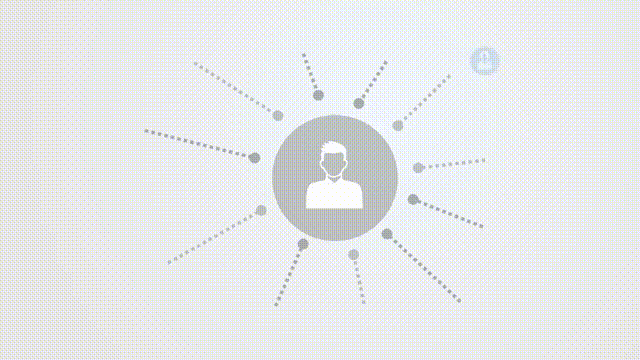Many important societal problems are neither simple nor easily solved; they are wicked problems. 1 A wicked problem is a social or cultural challenge that involves many social systems and groups, has unpredictable outcomes, and defies typical problem-solving techniques. 2
Wicked problem is a phrase originally used in social planning to describe a problem that is difficult or impossible to solve because of incomplete, contradictory, and changing requirements that are often difficult to recognize. It’s important to note that the word (wicked) is used to denote resistance to resolution, rather than evil. 3
Systems Theory
Because of complex interdependencies, the effort to solve one aspect of a wicked problem may reveal or create other problems. We make sense of this through systems theory, or the the interdisciplinary study of systems. These systems are cohesive groups of interrelated, interdependent components that can be natural or human-made.
Every system has causal boundaries and is influenced by its context, defined by its structure, function and role, and expressed through its relations with other systems. A system is more than the sum of its parts as it can express synergy, or the interaction or cooperation of two or more organizations, substances, or other agents to produce a combined effect greater than the sum of their separate effects. Systems can also show emergent behavior, or an unanticipated side effect of bringing together a new combination of capabilities. Emergent behaviors can be either beneficial, benign, or potentially harmful, but in all cases they are very difficult to foresee until they manifest themselves.
Addressing Wicked Problems
To address a real-world, wicked problems a transdisciplinary lens is needed to support educators and students as they engage with this content in ways that extend beyond traditional academic boundaries 4 Transdisciplinarity is a research or educational approach that seeks to challenge disciplinary boundaries to create a holistic perspective that enables inputs across scientific and non-scientific communities. 5 Looking at a problem and context through a transdisciplinary lens allows one to construct meaning in more authentic contexts where disciplines intersect, combine, and work together. 6

What could be described as a wicked problem is really a situation in which we’re recognizing the power and irregularity of evolving systems. In education, we want to provide learning opportunities for students that are valid representations of the challenges they’ll encounter in the real world. This calls for a greater amount of flexibility on the part of the teacher. Given the lack of structure, and problems with validity, reliability, and access of open digital information, educators need to be more flexible and tolerant as they engage in the learning process. 7 Teachers need to have an appreciation for the complexities, pitfalls, challenges, and opportunities that exist when using open, digital information in the classroom. 8 Educators must constantly re-envision what it means to be educated, and what it means to be literate as technology advances. Through the careful use of texts, tools, and pedagogy there is an opportunity to effectively achieve Friere’s goal that teachers should be learners, and learners should be teachers. 9
Students also bear a great deal of responsibility when engaging with wicked problems in the classroom. Students must display the discipline, responsibility, persistence, and flexibility required to work as an active participant in these interactions. In this process, students must take an active role in learning, and reconsider the concept of “school.” 10 In a classroom in which teachers empower students to wrestle with wicked problems, students may have to take a leadership role in the crafting and revision of new learning process or product. 11 12
Conclusion
We we prepare youth to enter their futures, it is important to be honest with learners and let them know that the systems, policies, and practices that govern our spaces may not always make sense. As we address wicked problems it is important to consider all of the contexts and contingencies that impact the these decisions. As learners in a globally connected community, we need to continue to evolve with these incomplete, contradictory, and changing challenges from a systems perspective.
When we think about pedagogy or curriculum in terms of content areas or disciplines, these arbitrary designations limit the creativity and perspective that youth need as they prepare for their futures. This siloed view of teaching, learning, and assessment stunts youth from fully engaging with meaningful experiences.
Adding complexity to this wicked problem of considering these opportunities in learning environments is that as we debate whether to include them in classes, the wicked problems themselves evolve, intensify, and metastasize. Educators need to evolve and reset paradigms around teaching, learning, and power as the challenges persist.
Content originally posted at https://wiobyrne.com/wicked-problems/
Photo by Markus Winkler on Unsplash
Footnotes
- Zellner, M., & Campbell, S. D. (2015). Planning for deep-rooted problems: What can we learn from aligning complex systems and wicked problems?. Planning Theory & Practice, 16(4), 457-478.
- Rittel, H. W., & Webber, M. M. (1973). Dilemmas in a general theory of planning. Policy sciences, 4(2), 155-169.
- Australian Public Service Commission. (2012). Tackling wicked problems: A public policy perspective. Retrieved from https://www.enablingchange.com.au/wickedproblems.pdf
- Alford, J., & Head, B. W. (2017). Wicked and less wicked problems: a typology and a contingency framework. Policy and Society, 36(3), 397-413.
- Mauser, W., Klepper, G., Rice, M., Schmalzbauer, B. S., Hackmann, H., Leemans, R., & Moore, H. (2013). Transdisciplinary global change research: the co-creation of knowledge for sustainability. Current opinion in environmental sustainability, 5(3-4), 420-431.
- Rice, M. (2013). Spanning disciplinary, sectoral and international boundaries: a sea change towards transdisciplinary global environmental change research?. Current Opinion in Environmental Sustainability, 5(3-4), 409-419.
- Mishra, P., & Koehler, M. J. (2006). Technological pedagogical content knowledge: A framework for teacher knowledge. Teachers college record, 108(6), 1017-1054.
- Milner, H. R. (2021). Start where you are, but don’t stay there: Understanding diversity, opportunity gaps, and teaching in today’s classrooms. Harvard Education Press.
- Freire, P. (1970). Cultural action for freedom (pp. 476-521). Harvard educational review.
- National Research Council. (2012). Education for life and work: Developing transferable knowledge and skills in the 21st century. National Academies Press.
- Lake, D., Fernando, H., & Eardley, D. (2016). The social lab classroom: Wrestling with—and learning from—sustainability challenges. Sustainability: Science, Practice and Policy, 12(1), 76-87.
- Ramley, J. A. (2014). The changing role of higher education: Learning to deal with wicked problems. Journal of Higher Education Outreach and Engagement, 18(3), 7-22.

